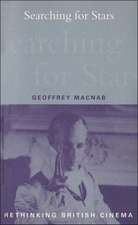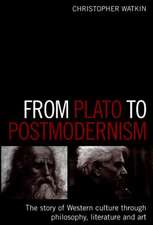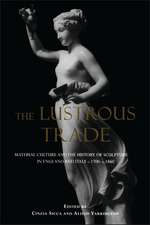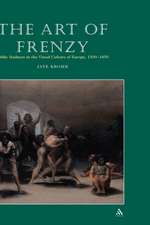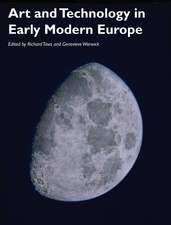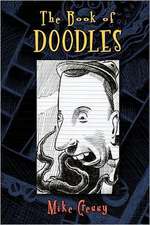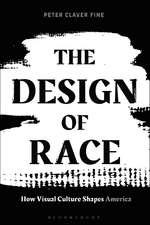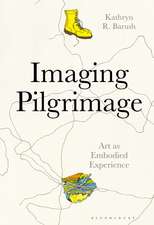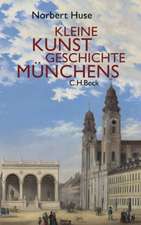Time, Media, and Visuality in Post-Revolutionary France
Editat de Iris Moon, Richard Tawsen Limba Engleză Hardback – 28 iul 2021
Preț: 541.11 lei
Preț vechi: 774.44 lei
-30% Nou
Puncte Express: 812
Preț estimativ în valută:
103.57€ • 107.72$ • 86.79£
103.57€ • 107.72$ • 86.79£
Carte disponibilă
Livrare economică 20 februarie-06 martie
Preluare comenzi: 021 569.72.76
Specificații
ISBN-13: 9781501348396
ISBN-10: 1501348396
Pagini: 280
Ilustrații: 32 color & 61 bw illus
Dimensiuni: 156 x 234 x 24 mm
Greutate: 0 kg
Editura: Bloomsbury Publishing
Colecția Bloomsbury Visual Arts
Locul publicării:New York, United States
ISBN-10: 1501348396
Pagini: 280
Ilustrații: 32 color & 61 bw illus
Dimensiuni: 156 x 234 x 24 mm
Greutate: 0 kg
Editura: Bloomsbury Publishing
Colecția Bloomsbury Visual Arts
Locul publicării:New York, United States
Caracteristici
Offers new theoretical, methodological, and historical insights into the visual and material culture of post-revolutionary France
Notă biografică
Iris Moon is Assistant Curator in the Department of European Sculpture and Decorative Arts at the Metropolitan Museum of Art, New York. She is author of The Architecture of Percier and Fontaine and the Struggle for Sovereignty in Revolutionary France (2016).Richard Taws is Reader in the History of Art at University College London. He is author of The Politics of the Provisional: Art and Ephemera in Revolutionary France (2013), and co-editor, with Genevieve Warwick, of Art and Technology in Early Modern Europe (2016). With a collective of scholars in various disciplines, he recently co-authored Interacting with Print: Elements of Reading in the Era of Print Saturation, 1700-1900 (2018).
Cuprins
List of PlatesList of FiguresNotes on ContributorsAcknowledgmentsIntroduction (Iris Moon and Richard Taws) 1 Miniature Style, 1789-1815 (Jann Matlock)2 Rupture, Interrupted: Rococo Recursions and Political Futures in Percier and Fontaine's Napoleon Fan (Iris Moon)3 A Draughtsman's Contract: Court and Country in the work of Louis Lafitte (Stephen Bann)4 Jean-Baptiste Huet's Lions and the Look of the Captive in Post-Revolutionary France (Katie Hornstein)5 First as Farce, then as Tragedy: Art, Vaudeville and Modern Painting after the French Revolution (Steven Adams)6 Monsieur Crouton, The Shop Sign Painter: The Unexceptional Artist in Early Nineteenth-Century Satirical Print (Kathryn Desplanque)7 Medium as Museum: Marie-Victoire Jacquotot's Porcelain Painting and Post-Revolutionary Fantasies of Preservation (Daniel Harkett)8 The Cultural Politics of Fashion and the French Revolution of 1830 (Susan L. Siegfried)9 A Storm is Coming: Georges Michel in the Wind (Richard Taws)Index
Recenzii
What did it mean to be post-Revolutionary? The question catalyzed an efflorescent and experimental media landscape. Reimagining the significance of artists and genres conventionally classified as "minor", this superb volume is every bit as trailblazing as the eclectic objects it brings to life.
This is truly a collection where the whole is greater than the sum of the parts, but what parts! Fans, miniatures, fashion, vaudeville, and paintings of shop-signs, porcelains, clouds, and lions add up in surprising ways: their crosspollination reveals a preoccupation with time in a post-revolutionary moment unlike any other. Read this as an exemplar of what media studies can be, or read it just for the sheer pleasure of each scintillating essay.
A fascinating dive into the period between the French Revolution and Second Empire, going to the heart of a visual and material culture split between the seductions of modernity and nostalgia for the past. It offers original reflections on notions of hierarchy, innovation, and mediation, examining the most varied and unusual artistic expressions in genre painting, the "minor" arts, fashion, and popular print.
A scintillating and powerful corrective to familiar narratives of French art of the period, Time, Media, and Visuality in Post-Revolutionary France brings to the fore an impressive diversity of artistic agents, materials, and forms. Centering on accounts of such habitually marginalized forms as miniature painting and reproductive painting on porcelain, animal painting, wallpaper, and fan design, the volume offers fascinating insights into the ways such representational practices were shaped by a new sense of time's recursivity.
This is truly a collection where the whole is greater than the sum of the parts, but what parts! Fans, miniatures, fashion, vaudeville, and paintings of shop-signs, porcelains, clouds, and lions add up in surprising ways: their crosspollination reveals a preoccupation with time in a post-revolutionary moment unlike any other. Read this as an exemplar of what media studies can be, or read it just for the sheer pleasure of each scintillating essay.
A fascinating dive into the period between the French Revolution and Second Empire, going to the heart of a visual and material culture split between the seductions of modernity and nostalgia for the past. It offers original reflections on notions of hierarchy, innovation, and mediation, examining the most varied and unusual artistic expressions in genre painting, the "minor" arts, fashion, and popular print.
A scintillating and powerful corrective to familiar narratives of French art of the period, Time, Media, and Visuality in Post-Revolutionary France brings to the fore an impressive diversity of artistic agents, materials, and forms. Centering on accounts of such habitually marginalized forms as miniature painting and reproductive painting on porcelain, animal painting, wallpaper, and fan design, the volume offers fascinating insights into the ways such representational practices were shaped by a new sense of time's recursivity.

